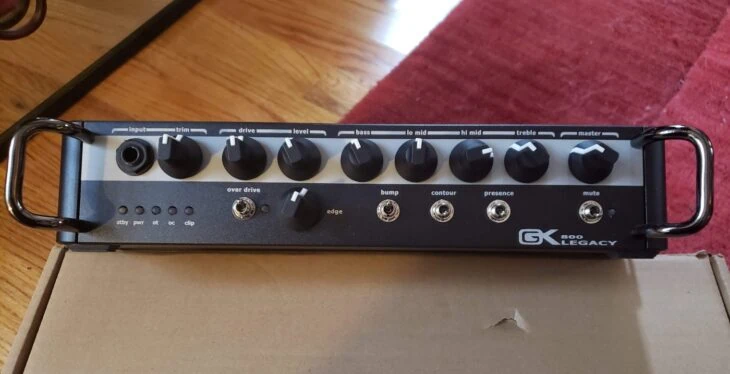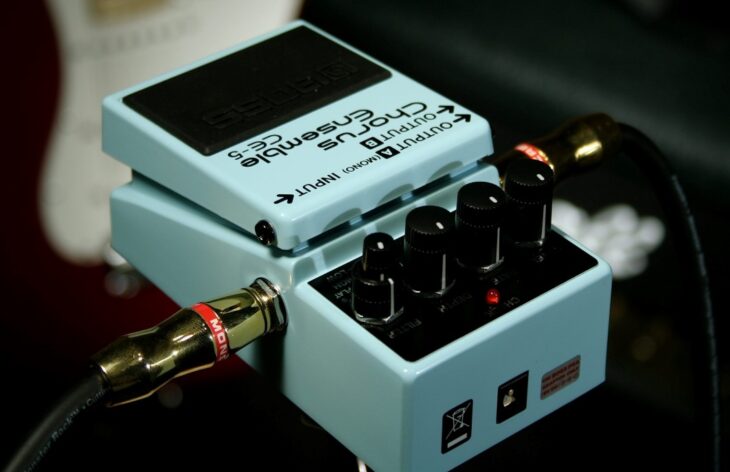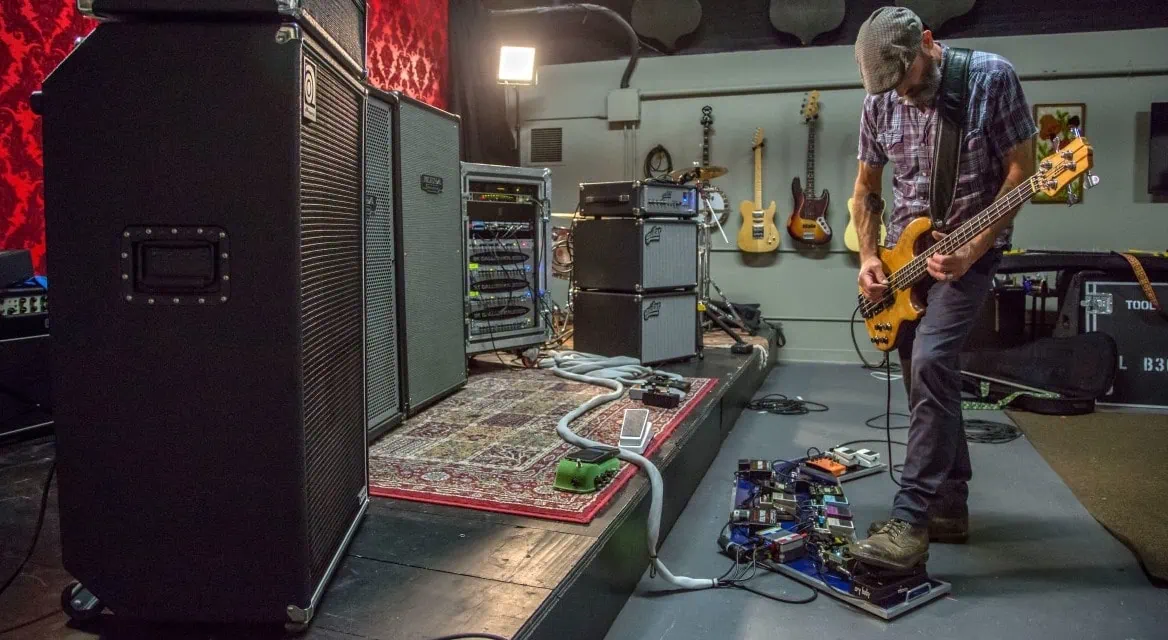Although Justin Chancellor was not Tool’s original bassist, joining the band during the recording of Ænima, his prodigious, highly technical playing has been a major feature of the group for over two decades.
Chancellor’s punchy, defined bass tone helped define Tool as one of the leading alt-metal bands of the ’90s and 2000s. Chancellor’s bass playing has influenced countless players ever since, with his advanced technique and unique tone standing out from the legions of other nineties nu-metal bassists.
In this article, I’ll look at the key elements of Justin Chancellor’s bass tone, including his choice of instruments, effects, amplifier, and techniques. Taking particular inspiration from “Schism,” we’ll set out ways for any player to capture the essence of Chancellor’s tone.
Table of Contents
Justin’s Bass Guitar
Justin Chancellor’s main bass over the years has been a four-string Wal MKII. Chancellor has used various Wal basses, including fretless models, over the years, but his main bass for recording and performing has been a fretted MKII.
This bass features a 34” scale length and 24-fret neck. His main Wal bass has a solid walnut body, while another is made from maple. Wal basses are boutique instruments with a unique pickup/preamp array.
The 4-string Wal bass humbucker features matched coils/pick-ups for each string, giving the bass a punchy, mid-boosted sound. In addition to this, they are fitted with custom preamps, hand-soldered with custom made graphite wiper pots with push/pull gold contact switches.
It’s safe to say that most musicians won’t be ordering a custom instrument any time soon.
A huge element of Justin Chancellor’s bass sound is the zingy, aggressive top-end bite.
For most musicians, I’d recommend the Warwick Corvette, which is armed with an active EQ and an ash body, offering plenty of high end and midrange. Another option is the Ibanez Standard, with similar specs.

While you won’t be able to put in the exact multi-coiled pickups Wal uses in their basses (or the built-in preamp), either of these basses have active EQs on board to help tailor your tone.
Justin’s Bass Strings
Fortunately, Justin Chancellor strings his custom Wal basses with Ernie Ball bass strings, which you can get from just about any music store. In particular, Chancellor has been a loyal player of their Hybrid Slinky bass strings (.045-.105), with a lighter gauge on top to facilitate his more advanced technical playing.
Justin Chancellor Tuning
Justin Chancellor plays most of the time in Drop D, with his bass tuned to D-A-D-G. Some Tool songs, such as “Prison Sex,” are tuned to Drop B, or B-F#-B-E. For the most part, however, you can play in Drop D.
Amps
Justin Chancellor often runs multiple amps at once, so replicating his tone with a single amplifier is easier said than done. However, a mainstay of his rig and the main source of his Tool tone is the Gallien-Krueger 2001RB head.
However, this head is not the easiest to find, but Gallien-Krueger makes a wide array of high-quality affordable bass heads. The Legacy 800, for example, or the MB 212 combo are excellent amplifiers with a great amount of high-midrange punch for nailing those classic Tool tones.

Justin Chancellor Amp Settings – Tool Bass Tone!
Volume: 5
Unlike most metal tones, you don’t need an extraordinary amount of volume for the Justin Chancellor sound.
Gain: 5
Any distortion Chancellor uses comes from his pedalboard. Set the gain relatively low.
Bass: 3
This is a very bright tone with minimal bottom end.
Mids: 9-10
Most of Justin Chancellor’s tone is in the midrange.
Treble: 4
You don’t want any fizzy, picky treble in this sound. Balance the treble against the bass.
Pedalboard
Justin Chancellor has made great use of a wide array of effects. A mainstay of his tone is the Digitech Bass Whammy, which he uses to alter the pitch of his bass on songs like “Schism.”
He uses a few Boss effects, including the CE-5 Chorus Ensemble, Digital Delay, and most famously, the BF-2 Flanger. You can use the BF-3 instead if you can’t find a BF-2.

The Justin Chancellor flanger settings are fairly uniform. For the intro tone on “46&2” I recommend setting the controls on the BF-3 as follows:
Res: halfway
Manual: almost zero
Depth: Just higher than halfway, around one o’clock
Rate: Just below halfway, around 10 o’clock
Mode: Standard
Chancellor typically runs his flanger with his chorus pedal on. Critically, he has the flanger before most of his dirt pedals in his pedal order.
Justin Chancellor’s choice of distortion is a combination of the Tech 21 Sansamp GT2 Distortion, the Colorsound Tone Bender (I’d recommend this Keeley alternative), and a ProCo Turbo Rat.

Final Word
The Justin Chancellor bass tone is a complicated mixture of bass, pedals, amp, and technique. Nailing the Tool tone will take time and dedication to fine-tuning your technique as well as the individual pieces of gear that make up the rig.
However, doing so is a great exercise, as it helps train your ear as well as your fingers. Being a great musician requires having a great ear, and I highly recommend devoting a few hours to tweaking your tones to capture the Tool sound.
On a related note, if you’re also looking to emulate the guitar tone of Tool’s Adam Jones, we’ve also covered that here.

